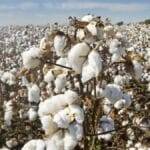Main Points In Hindi (मुख्य बातें – हिंदी में)
-
मुख्य उद्देश्य और योजना: पिछले दशकों में, कृषि और मत्स्य आधुनिकीकरण अधिनियम (एएफएमए) के अंतर्गत कार्गो-उन्मुख बंदरगाहों और हवाई अड्डों का विकास एक निर्यात पावरहाउस के निर्माण के लक्ष्य के साथ किया गया था, जिससे फिलीपींस कृषि निर्यात में प्रतिस्पर्धी बन सके।
-
विफलता और वित्तीय कमी: एएफएमए के तहत निर्धारित लक्ष्यों को कमीशन के तहत बजट में प्राथमिकता न मिलने के कारण असफलता का सामना करना पड़ा, जिससे कृषि को एक तृतीयक प्राथमिकता में धकेल दिया गया और निर्यात विकास के सपने अधूरे रह गए।
-
वर्तमान योजना का उद्देश्य: कृषि विभाग द्वारा पेश किए जा रहे 17 नए बंदरगाहों का मुख्य उद्देश्य कृषि उत्पादकता बढ़ाने के बजाय आयात की सुविधा प्रदान करना है, जो निराशाजनक है और दिखाता है कि देश कृषि उद्यमिता की बजाय आयात पर निर्भर है।
-
आर्थिक संदर्भ: फिलीपींस अब प्रमुख खाद्य आयातक बन गया है, जिसमें चावल और अन्य मुख्य खाद्य पदार्थों का आयात शामिल है, यह दिखाता है कि कृषि सेक्टर में गिरावट आई है और नीति में असफलता की ओर संकेत करता है।
- भविष्य की चिंता: कृषि विभाग की योजनाओं का विचार यह दर्शाता है कि फिलीपींस कृषि निर्यात में अपने ऐतिहासिक स्थान को खोता जा रहा है, जिससे स्थिति के और बिगड़ने की संभावना है।
Main Points In English(मुख्य बातें – अंग्रेज़ी में)
Here are the main points from the provided text:
-
Historical Context of Agricultural Modernization: The text discusses the vision for cargo-oriented ports and airports as essential components of a thriving agricultural sector in the Philippines, as envisioned in the Agriculture and Fisheries Modernization Act (AFMA) of the late 1990s.
-
Failure of AFMA: Despite the ambition behind AFMA to transform the Philippines into an agricultural export powerhouse with specialized agricultural and fisheries zones, inadequate funding has led to the failure to achieve this vision, pushing agriculture to a tertiary priority in budgeting.
-
Current Port Development Plans: The Department of Agriculture’s (DA) current plan to create 17 new ports is criticized as a tacit acknowledgment of a failure to enhance agricultural productivity. The ports are seen as facilitating imports rather than exports, emphasizing the continued reliance on imported food.
-
Concerns Regarding Agricultural Dependency: The text expresses dissatisfaction with the ongoing importation of essential food items, including rice, and suggests that the country is perpetuating a cycle of exporting people while importing food, raising concerns about food security and the state of the agricultural sector.
- Critique of Agricultural Leadership: The leadership within the DA is critiqued for perceived incompetence, as the planned ports primarily serve the purpose of managing agricultural inputs and imports rather than fostering the growth of an export-driven agricultural economy. The current situation reflects a regression rather than a renaissance in the agricultural sector.


Complete News In Hindi(पूरी खबर – हिंदी में)
पिछली शताब्दी में, कार्गो-उन्मुख बंदरगाहों और हवाई अड्डों की कल्पना एक संपन्न कृषि क्षेत्र के महत्वपूर्ण घटकों के रूप में की गई थी। 1990 के दशक के उत्तरार्ध में कृषि और मत्स्य आधुनिकीकरण अधिनियम (एएफएमए) के बढ़िया प्रिंट और भावना में विशेष रूप से कृषि और मत्स्य पालन के लिए विशेष क्षेत्र बनाने की आवश्यकता का उल्लेख किया गया था जो प्रमुख बंदरगाहों और हवाई अड्डों के आसपास क्लस्टर किए जाएंगे। विशेष कृषि और मत्स्य पालन क्षेत्र बनाने की योजना में निहित यह था: एएफएमए कृषि और मत्स्य विकास को उस स्तर तक बढ़ावा देगा जो फिलीपींस को कृषि निर्यात पावरहाउस में बदल देगा। और एक निर्यात बिजलीघर को वास्तव में उन कार्गो-उन्मुख बंदरगाहों और हवाई अड्डों की आवश्यकता थी ताकि फिलीपीन उत्पादक आसानी से अपने खाद्य निर्यात को तेजी से और कुशलता से वैश्विक बाजार में ले जा सकें।
मेरी लड़खड़ाती वरिष्ठ स्मृति अभी भी एक निर्यात पावरहाउस के सपने के भीतर उन नियोजित कृषि और मत्स्य निर्यात क्षेत्रों के संक्षिप्त नाम को याद कर सकती है। इन्हें ज़ोपैड्स के नाम से जाना जाएगा – कृषि और मत्स्य विकास के क्षेत्र जो कार्गो-उन्मुख बंदरगाहों और हवाई अड्डों द्वारा समर्थित होंगे।
जैसा कि हम सभी जानते हैं, कम फंडिंग ने एएफएमए के भव्य सपनों को विफल कर दिया, जिसकी एक ऐसे देश से पूरी तरह से उम्मीद की गई थी जो साल-दर-साल कृषि के लिए पूर्ण समर्थन का वादा करता है, लेकिन कृषि को तृतीयक प्राथमिकता में धकेल कर उस वादे से मुकर गया। चीज़ों की बजटीय योजना. क्या हम कृषि आधुनिकीकरण के लिए उस मील के पत्थर के कानून के भव्य सपनों की कमी के लिए एएफएमए को तैयार करने और पारित करने के लिए प्रेरित करने वाले हाउस-सीनेट दल को दोषी ठहरा सकते हैं? नहीं, यदि आप जानते हैं कि अब तक, कार्यकारी शाखा अभी भी बजट प्रक्रिया को निर्देशित करती है, और कांग्रेसियों और सीनेटरों के पास मूल एनईपी, या राष्ट्रीय व्यय कार्यक्रम की समीक्षा करने का सीमांत कार्य बचा है, जो मूल रूप से कार्यकारी शाखा द्वारा लिखा गया है। कार्यकारी शाखा, फिलीपींस में यह कठिन और अजीब वास्तविकता है, केवल वार्षिक राष्ट्रीय बजट का प्रस्ताव नहीं करती है। यह पूरी प्रक्रिया की गति और दिशा तय करता है। यह थोड़ा विषय से हटकर है, लेकिन यह एक वास्तविकता है: प्रतिशोधी प्रशासन की अवहेलना करने वाले कांग्रेसियों और सीनेटरों को उनके पोर्क बैरल आवंटन से वंचित किया जा सकता है।
चूंकि 21वीं सदी की पहली तिमाही समाप्त होने वाली है, आप इस मुद्दे पर ज्ञान चाहते होंगे। क्या देश भर में 17 बंदरगाह बनाने की मौजूदा कृषि विभाग (डीए) की भव्य योजना अंततः प्रमुख बंदरगाहों और हवाई अड्डों के आसपास संपन्न कृषि और मत्स्य पालन क्षेत्र बनाने के एएफएमए निर्माताओं के सपने से संबंधित है? क्या डीए मंदारिन ऐसी स्थिति की कल्पना कर रहे हैं जहां फिलीपींस, जो अब अंततः एक निर्यात महाशक्ति है, पारंपरिक और उच्च मूल्य वाली फसलों और अन्य खाद्य पदार्थों को सात समुद्रों के पार बंदरगाहों में भेज देगा? बिल्कुल एएफएमए निर्माताओं द्वारा प्रस्तुत भव्य दृष्टिकोण की तरह?
निराशाजनक उत्तर एक बड़ा “नहीं” है। यह कहते हुए दुख हो रहा है कि नियोजित 17 बंदरगाहों के लिए बोलीदाताओं को आकर्षित करने का निर्णय लापरवाह डीए की ओर से एक मौन स्वीकृति है कि वह कृषि उत्पादकता को बढ़ावा देने के आदेश पर पूरी तरह से विफल रहा है। बंदरगाहों की परिकल्पना कृषि आयात की आसान हैंडलिंग और प्रसंस्करण की सुविधा के लिए की गई है, निर्यात की नहीं। उनका निर्माण करें ताकि आयात आएगा। निराशाजनक लेकिन सच है.
बंदरगाहों के निर्माण का औचित्य इतना निराशाजनक है कि हमें यह सवाल करना पड़ता है कि क्या बंदरगाहों की बोली लगाने की योजना की सार्वजनिक रूप से घोषणा करने में गर्व होना चाहिए। यह शर्म और शाश्वत शर्मिंदगी का स्रोत होना चाहिए, गर्व का नहीं। “हमें खाद्य आयात की लागत कम करने के लिए बंदरगाहों का निर्माण करना होगा” तर्क एक मौन स्वीकृति है कि हम हमेशा एक ऐसा राष्ट्र बने रहेंगे जो बहुमूल्य कठिन मुद्रा अर्जित करने के लिए लोगों को निर्यात करता है, फिर विदेशों में अपना बुनियादी खाद्य पदार्थ खरीदता है। लोगों को निर्यात करें, भोजन आयात करें। क्या कोई अन्य नीतिगत समीकरण है जो उससे अधिक निराशाजनक है?
बंदरगाहों का निर्माण भी मौजूदा डीए मंदारिनों की पूर्ण अक्षमता का एक मौन प्रवेश है, जिसका नेतृत्व एक अरबपति ने किया था, जिसे इस क्षेत्र में चीजों की दुखद स्थिति को बदलने के लिए मार्चिंग आदेश दिए गए थे। डीए के कठोर प्रतिगमन की ओर अग्रसर होने की मौन स्वीकृति।
डीए मंदारिनों ने दावा किया कि नियोजित बंदरगाह मुख्य रूप से उर्वरक जैसे कृषि इनपुट की सेवा करेंगे, जो वास्तव में कृषि से संबंधित एक प्रमुख आयात वस्तु है। लेकिन यह स्पष्ट रूप से बताने में विफल रहा कि बंदरगाह मुख्य रूप से लाभ-प्रेरित, लालच-प्रेरित चावल आयात का तांडव करेंगे। सितंबर के अंत तक, लगभग 3 मिलियन मीट्रिक टन चावल देश में भेजा गया था, मुख्य रूप से वियतनाम से। अनुमान है कि दिसंबर के अंत तक देश लगभग 40 लाख मीट्रिक टन चावल का आयात कर लेगा। यह एक ऐतिहासिक ऊंचाई होगी. हम 2023 में सबसे बड़े चावल आयातक थे, और इस साल हम वही शर्मनाक रिकॉर्ड बनाएंगे। अनुमान है कि 2025 में हम दुनिया के सबसे बड़े चावल आयातक बने रहेंगे।
इस वर्ष, देश पीला मक्का, सूअर का मांस, मछली और अन्य प्रमुख खाद्य पदार्थों का भी प्रमुख आयातक होगा। अफ्रीकी स्वाइन बुखार महामारी पर लगाम लगाने में डीए मंदारिन की विफलता को देखते हुए ब्राजील जैसे मांस निर्यातक अब फिलीपीन मांस आयात पर अतिरिक्त ध्यान दे रहे हैं। हम अतीस, पाटीस और टोयो का आयात करते हैं, शायद यह इस बात का सूचक है कि देश का कृषि क्षेत्र किस निचले स्तर पर चला गया है।
निर्यात के मोर्चे पर, केले और नारियल के दूसरे या शीर्ष निर्यातक के रूप में हमारी विशिष्ट भूमिका अब इतिहास बन गई है।
बागोंग पिलिपिनास के तहत डीए जो P40 बिलियन बंदरगाह बनाएगा, वह इस क्षेत्र के पुनर्जागरण और गतिशीलता का नहीं बल्कि इसकी पूर्ण अक्षमता और प्रतिगमन का स्मारक होगा।
Complete News In English(पूरी खबर – अंग्रेज़ी में)
In the last century, cargo-oriented ports and airports were envisioned as crucial components for a thriving agricultural sector. The Agricultural and Fisheries Modernization Act (AFMA) specifically called for the creation of dedicated zones for agriculture and fisheries, clustered around major ports and airports in the late 1990s. The plan behind these special areas was that AFMA would boost agricultural and fisheries development to the point where the Philippines could become an agricultural export powerhouse. For that to happen, robust cargo-oriented ports and airports were necessary to allow Filipino producers to efficiently and quickly transport their food exports to global markets.
I still vaguely recall the acronyms for the planned agricultural and fishery export zones within the dream of becoming an export powerhouse. These zones were to be called ZOPAIDs, dedicated areas for agricultural and fishery development supported by cargo-oriented ports and airports.
Sadly, underfunding has derailed AFMA’s grand dreams. A country that repeatedly promised full support for agriculture eventually relegated it to a tertiary priority, breaking that promise in budgetary planning. Can we blame the House-Senate coalition that pushed for and passed the milestone legislation on agricultural modernization? Not really, as it’s now clear that the executive branch still directs the budget process, leaving Congress members with minimal power to review the National Expenditure Program, originally drafted by the executive branch. It’s an unfortunate reality in the Philippines that the executive branch not only proposes the annual national budget but also drives the entire process. Side note: Congress members can be deprived of pork barrel allocations if they defy the demands of the administration.
As we approach the end of the first quarter of the 21st century, you might be wondering about the current plans by the Department of Agriculture (DA) to build 17 ports across the country. Do these plans relate to the dream of creating prosperous agricultural and fisheries zones around major ports and airports as envisioned by the AFMA? Is the DA envisioning a scenario where the Philippines, now finally an export powerhouse, sends traditional and high-value crops and other food items to ports across the seven seas? Is this akin to the grand vision presented by AFMA’s creators?
The disappointing answer is a resounding “no.” It’s sad to say that the decision to attract bidders for the planned 17 ports is a tacit admission by the DA of its complete failure to boost agricultural productivity. The ports are primarily envisioned for handling and processing agricultural imports, not exports. They are being built to facilitate incoming imports. It’s discouraging but true.
The rationale behind constructing these ports is so disappointing that one must question whether the public announcement of the bidding plan should incite pride. It should be a source of shame and eternal embarrassment, not pride. The argument, “We need to build ports to reduce food import costs,” is a tacit acceptance that we will always remain a nation that exports people to earn hard currency and then buys basic food items from abroad. Export people, import food. Is there any other policy equation more disheartening than that?
The construction of ports also silently acknowledges the complete incompetence of the current DA officials, led by a billionaire who was assigned to change the dismal state of the sector. It is tacit approval of the DA’s significant regression.
DA officials claim that the planned ports will primarily serve agricultural inputs like fertilizers, which are indeed a major imported item related to agriculture. However, they conspicuously fail to mention that these ports will mainly facilitate the import of profit-driven rice, driven by greed. By the end of September, approximately 3 million metric tons of rice were shipped to the country, primarily from Vietnam. Estimates suggest that by the end of December, the country will have imported nearly 4 million metric tons of rice, reaching a historic high. In 2023, we were the largest rice importer, and we are set to break that embarrassing record again this year. By 2025, we are expected to become the world’s largest rice importer.
This year, the country will also be a significant importer of yellow corn, pork, fish, and other major food items. Given the DA’s failure to control the African Swine Fever pandemic, meat exporters, like Brazil, are now focusing more on the Philippine meat import market. We are importing processed items like “atis,” “patis,” and “toyo,” which indicates just how low the country’s agricultural sector has fallen.
As for exports, our past prominent role as the second or top exporter of bananas and coconuts has now become a thing of the past.
The ports that will be built under the DA’s P40 billion plan will not be a testament to the renaissance and dynamism of the sector but a monument to its complete failure and regression.




